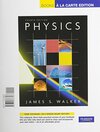Bayesian Approach to Inverse Problems
herausgegeben von Jérôme IdierMany scientific, medical or engineering problems raise the issue ofrecovering some physical quantities from indirect measurements; forinstance, detecting or quantifying flaws or cracks within amaterial from acoustic or electromagnetic measurements at itssurface is an essential problem of non-destructive evaluation. Theconcept of inverse problems precisely originates from the idea ofinverting the laws of physics to recover a quantity of interestfrom measurable data.
Unfortunately, most inverse problems are ill-posed, which meansthat precise and stable solutions are not easy to devise. Regularization is the key concept to solve inverse problems.
The goal of this book is to deal with inverse problems andregularized solutions using the Bayesian statistical tools, with aparticular view to signal and image estimation.
The first three chapters bring the theoretical notions that make itpossible to cast inverse problems within a mathematical framework. The next three chapters address the fundamental inverse problem ofdeconvolution in a comprehensive manner. Chapters 7 and 8 deal withadvanced statistical questions linked to image estimation. In thelast five chapters, the main tools introduced in the previouschapters are put into a practical context in important applicativeareas, such as astronomy or medical imaging.
Unfortunately, most inverse problems are ill-posed, which meansthat precise and stable solutions are not easy to devise. Regularization is the key concept to solve inverse problems.
The goal of this book is to deal with inverse problems andregularized solutions using the Bayesian statistical tools, with aparticular view to signal and image estimation.
The first three chapters bring the theoretical notions that make itpossible to cast inverse problems within a mathematical framework. The next three chapters address the fundamental inverse problem ofdeconvolution in a comprehensive manner. Chapters 7 and 8 deal withadvanced statistical questions linked to image estimation. In thelast five chapters, the main tools introduced in the previouschapters are put into a practical context in important applicativeareas, such as astronomy or medical imaging.







